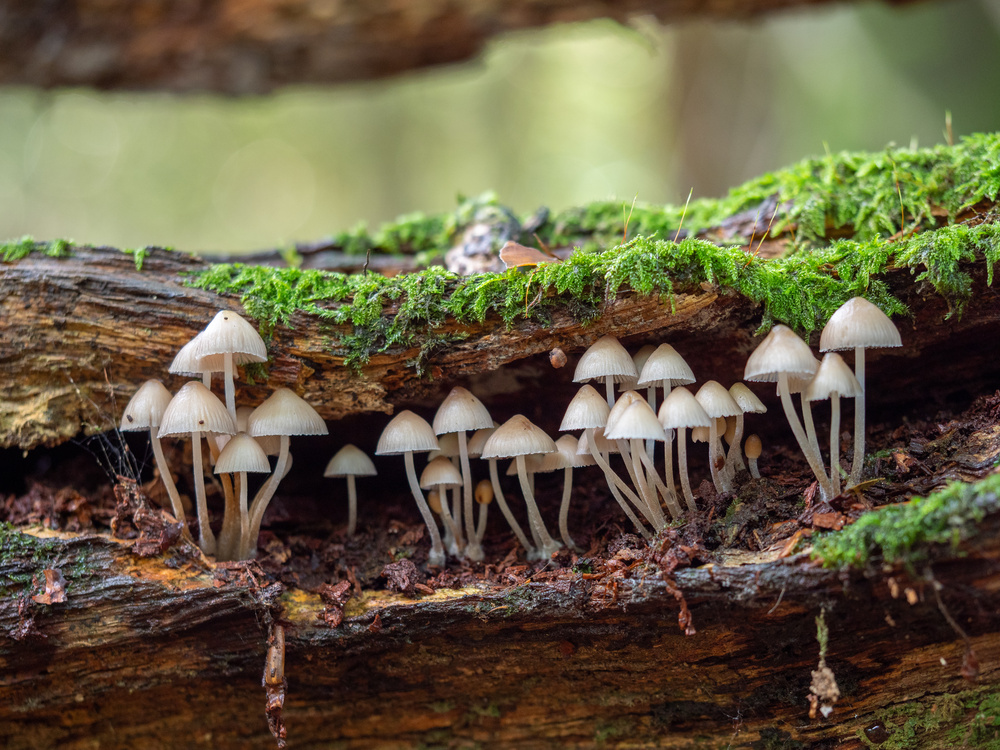Science is continually on the lookout for innovative ways to deal with plastic waste. As we all know, plastic takes a long time to decompose in a landfill. So if we can find a way to break them down without burying them, doing so would probably be a good thing. Are fungi the answer?
Based on exciting research out of Australia, fungi is one possibility. Researchers from the University of Sydney have discovered two particular strains of fungi they say can break down one of the least recycled plastics: polypropylene. They proved it in a lab with a petri dish. Now they need to find a way to scale up.
Plastics Are Polymer Chains
Plastics are tough materials designed to last. Plastic is essentially a conglomeration of polymer chains which, themselves, are long chains of molecules connected by hard-to-break bonds. The bonds are so tough that plastics are impervious to most environmental influences.
The difficulty of breaking the bonds is one of the things that has prevented large-scale recycling efforts thus far. When it comes to commercial plastics, mechanical recycling is the preferred method. Recycling companies like Seraphim Plastics purchase industrial scrap plastic and then send it through grinders and shredders to reduce it to a material that can be added to virgin plastic in the manufacturing process.
Mechanical recycling works, but it degrades the integrity of the material. That is why manufacturers cannot use it exclusively. Chemical recycling is another possibility. But it is energy intense, potentially polluting, and quite complicated.
Let Fungi Eat It
University of Sydney researchers propose letting fungi eat plastic waste in the absence of effective recycling methods. The idea is to recycle what we can and turn the rest over to the fungi. Researchers are focusing on two in particular: aspergillus terreus and engyodontium album.
In laboratory experiments, both were able to break down polypropylene by nearly 30% over a 90-day span. The plastic had been pretreated with UV light to make it easier for the fungi to do its job.
Researchers chose fungi due to its well-known ability to latch on to substrates and eat them. Different varieties of fungi seem to have appetites for different types of materials, but wood is pretty common among most of them. Still, diversity within fungi species explains why they are able to grow and thrive in carpets, in shower curtains and tile grout, in upholstery, etc.
A Very Slow Process
As promising as the fungi research has been, allowing these living organisms to consume our plastic waste is a slow process when compared to chemical and mechanical recycling. Sure. it can take certain types of plastic 100 years or more to decompose in a landfill. But it can be shredded in a matter of minutes. Waiting 90 days for fungi to break down plastic by 30% equates to waiting 270 days to get rid of that plastic completely.
We would need an awful lot of fungi working overtime to consume plastic waste as quickly as we generate it. But then there is something else to consider: do we know the environmental impact of having so much fungi actively eating plastic? Would we be overrun with fungi to the point of creating much bigger problems?
For now, what we don’t know about plastic-consuming fungi is more than we do know. Fungi could eventually prove to be the best way to deal with plastic waste. But there is still a ton of work to be done before we get to that point. We probably haven’t seen the last of the research.
